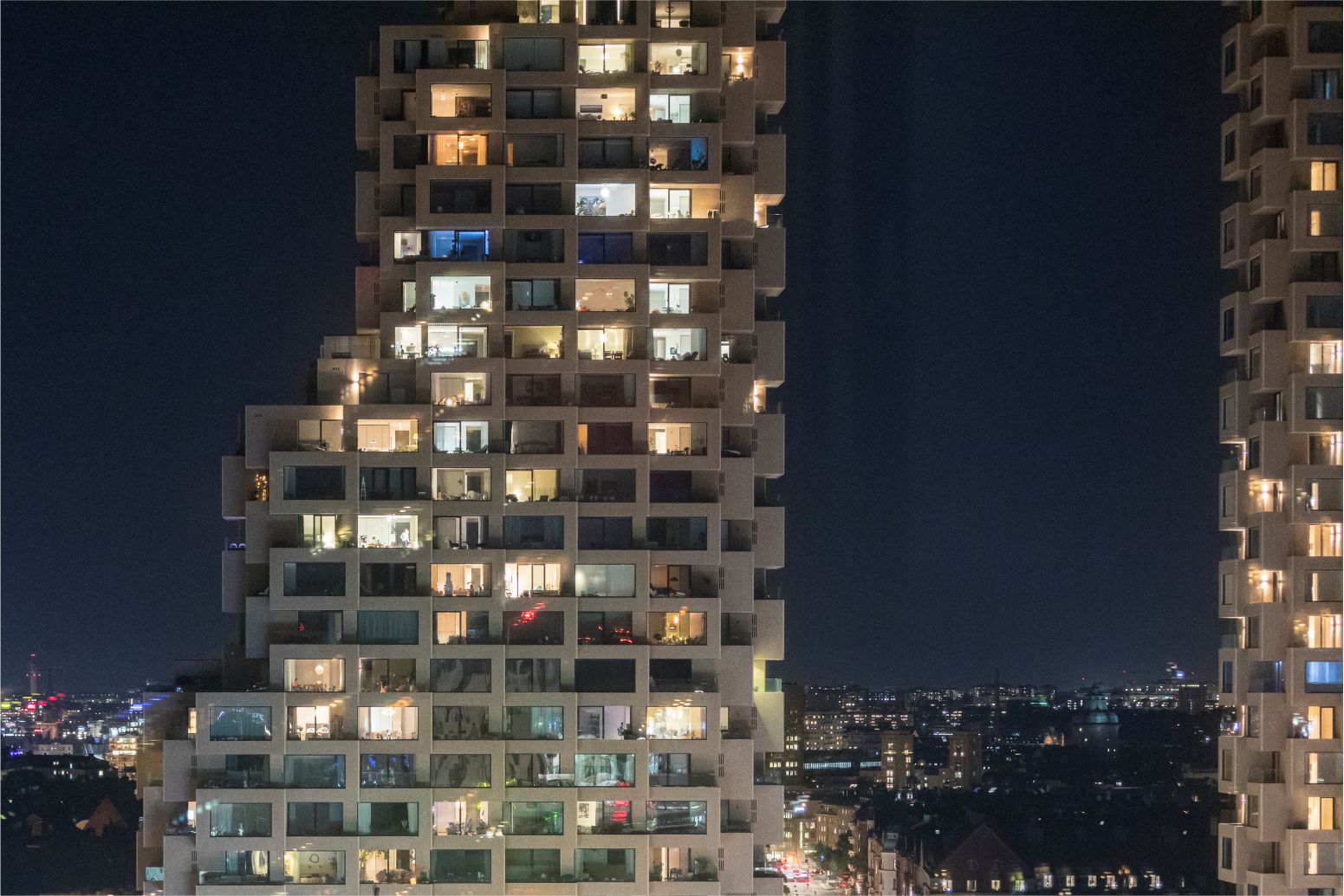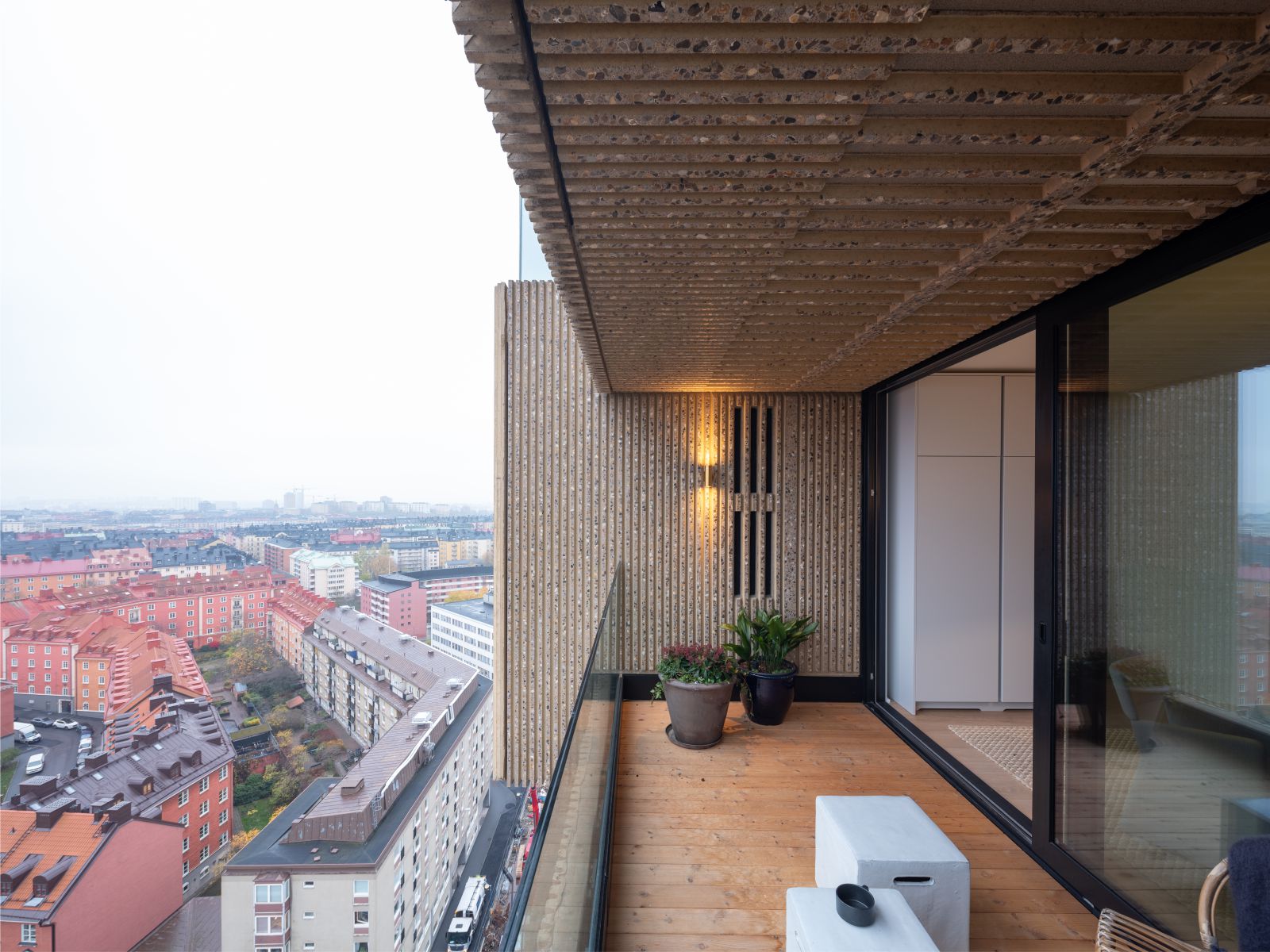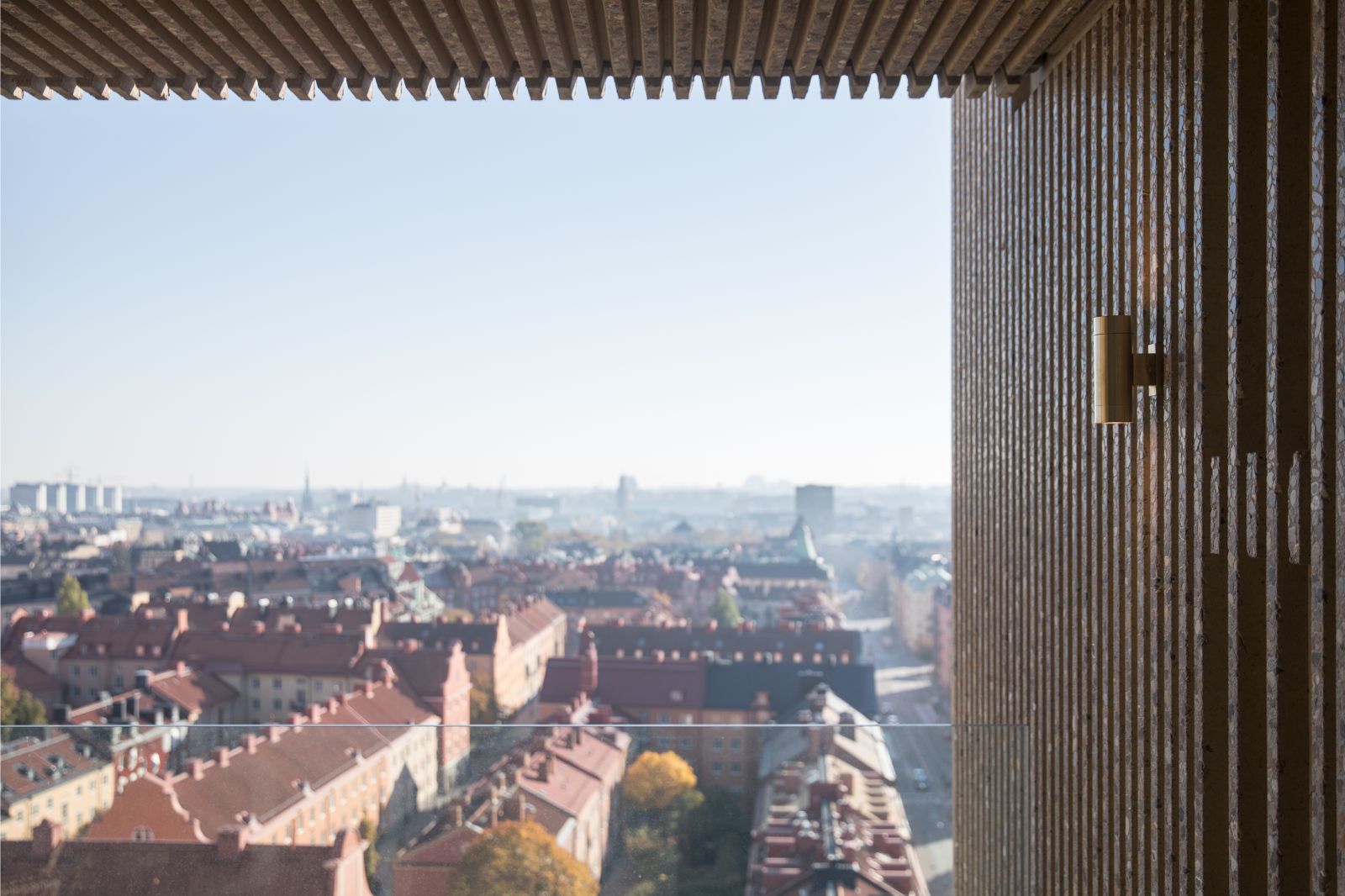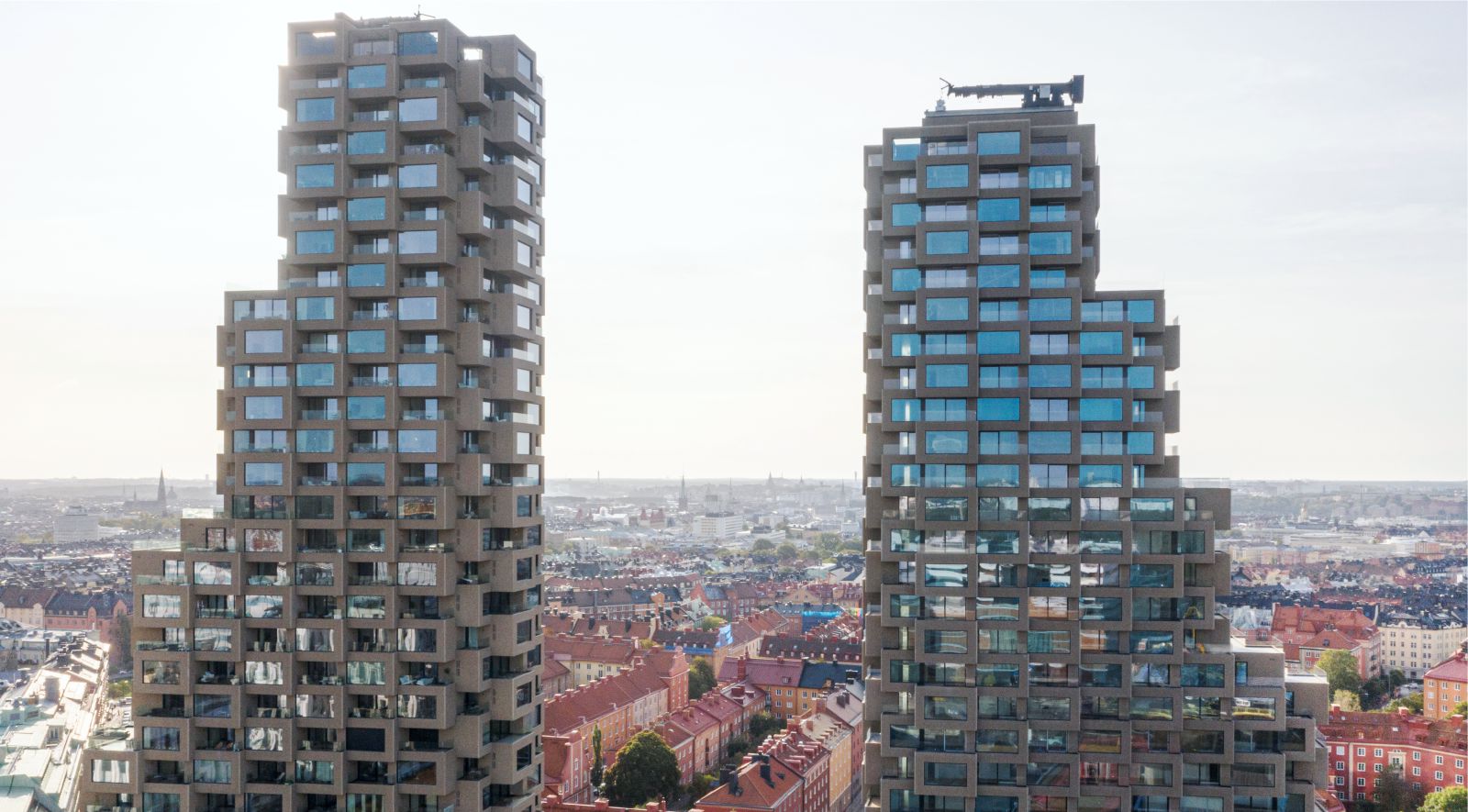Norra Tornen, the residential towers designed by OMA / Reinier de Graaf and commissioned by Oscar Properties, has been announced the winner of the ninth edition of the International Highrise Award (IHA). The award was presented by Dr. Ina Hartwig, the City of Frankfurt Deputy Mayor for Culture, Dr. Matthias Danne, Deputy CEO of DekaBank, and Peter Cachola Schmal, Director of the Deutsches Architekturmuseum (DAM) in a ceremony broadcast from Paulskirche in Frankfurt.
The International Highrise Award (IHA) is awarded every two years to architects and developers for buildings of minimum 100 meters in height, completed in the last two years. Reinier de Graaf, OMA Partner in Charge of the project: “For me, the award came somewhat unexpectedly since I never thought of the Norra Tornen towers as high-rise buildings. They are different from the conventional idea of a skyscraper. They are not monumental but homely, their aesthetics are informal and they rely on repetition only to produce diversity.”
Oscar Engelberg, CEO of Oscar Properties: “We are incredibly happy and proud that Norra Tornen has been named the world’s most innovative high-rise building! The project has received a great deal of international attention and the award is proof of many years of hard work and that it pays off to invest in innovative architecture.”Peter Cahorla Schmal, Director of the Deutsches Architekturmuseum (DAM): “Norra Tornen is a refreshing entrance to the city, recalling structuralist models of brutalism from the 1960s.”
The Norra Tornen project started with two inherited building envelopes, the remains of a cancelled project initiated by the former city architect Aleksander Wolodarski. Each a kind of ‘crescendo’ composition of different heights – neither slab nor tower – prohibit the unfolding of an uncompromised typology. Conversely, the opted program, apartments with an emphasis on large outdoor spaces, prevented too literal a translation of the envelopes into architectural form.
Through a kind of ‘Freudian flight forward’ – a passionate embrace of the inevitable in order to conquer and overcome one’s initial fears – the prescribed building envelope was adopted as a given. Its initial vertical segmentation was complemented by a second, horizontal segmentation that gives the buildings’ exterior a single, homogeneous treatment: a rough skin, formed through an alternating pattern of withdrawn outdoor spaces and protruding living rooms.
The chosen material, ribbed colored concrete brushed with exposed multi-colored aggregate pebbles, echoes brutalist architecture and that is not by chance. According to architecture critic Reyner Banham, the term brutalist architecture was invented by Hans Asplund, the son of Gunnar Asplund, when referring to a design of his studio colleagues in a letter to his British architect friends.
Concrete at Norra Tornen comes in the form of prefabricated panels – a construction technique that allows work on the building site to continue even below the five-degree Celsius limit which prohibits in situ concrete pouring. Prefabrication also significantly reduced construction costs. This way a design with a wall-to-floor ratio close to 1 – most developers would be discouraged by a 0.5 ratio – was suddenly not an unthinkable proposition.
The investment could be channeled in creating apartments with unique layouts, multiple orientations and extra square meters of windows – a precious asset in a country with scarce daylight for half of the year. In a city center with a housing stock largely built before the Second World War, Norra Tornen introduces a new way of living which brings together density with the possibility to enjoy outdoor space (Stockholm ranks fourth among the cities with the highest air quality in the European Union).
The Innovationen Tower comprises 182 units ranging from 44 sqm one-bedroom apartments to a 271 sqm penthouse on the top floor, with the majority consisting of two- or three-bedroom apartments of 80 to 120 sqm. The residential units are complemented by a cinema room, a dinner room for parties and celebrations, a guest apartment, a gym with a sauna and a relaxation area, and retail space at the ground floor. The Helix Tower includes 138 units, plus amenities.
At a height of 125 meters, and 110 meters, respectively, the two towers are the highest residential buildings in Stockholm’s city center. Located in Hagastaden, a new district in the north of Stockholm developed around the Karolisnka Institute (which awards the Nobel Prize in Medicine), they stand as a gate to the city. A once formalist structure comes to house apartments that are surprisingly informal…one could even say humanist. Source and images Courtesy of OMA.

Photo © Ossip van Duivenbode 
Photo © Ossip van Duivenbode 
Photo © Laurian Ghinitoiu 
Photo © Laurian Ghinitoiu 
Photo © Laurian Ghinitoiu 
Photo © Laurian Ghinitoiu 
Photo © Ossip van Duivenbode 
Photo © Ossip van Duivenbode 
Photo © Ossip van Duivenbode 
Photo © Laurian Ghinitoiu 
Photo © Ossip van Duivenbode 
Photo © Ossip van Duivenbode 
Photo © Laurian Ghinitoiu 
Photo © Laurian Ghinitoiu 
Photo © Laurian Ghinitoiu

